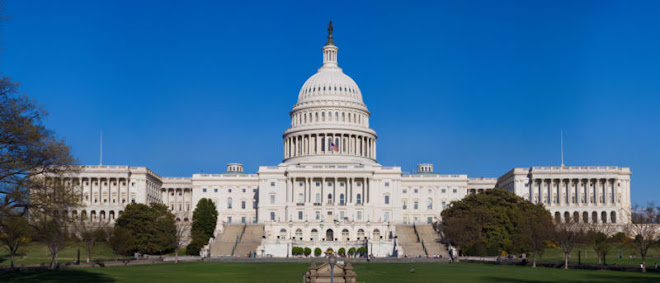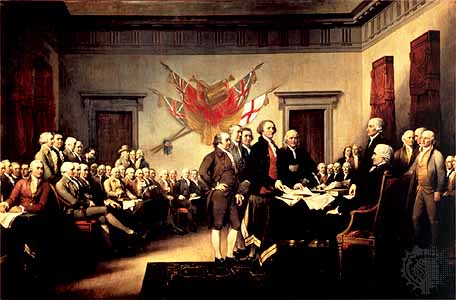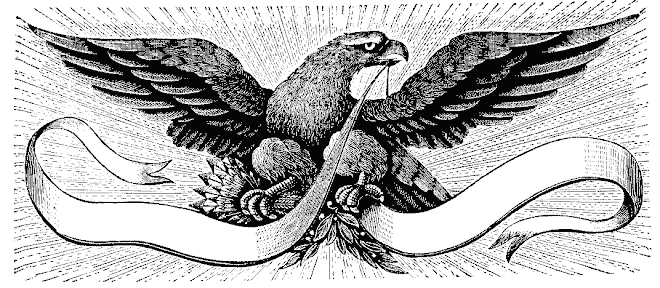From The American Thinker:
February 18, 2011
It's the Teachers, Stupid!
By Jack Curtis
Unionized teachers outnumber other government workers and run the schools in every state; why do we keep on accepting their decades of miserable results?
A careless airline pilot, a lazy waitress, a crash-prone cabdriver, an unproductive salesman, an innumerate cashier will all have to find other work; poor teachers keep teaching and receiving raises as years go by and kids don't learn. Of course; they, with their unions, run the show.
Adam Smith prophesied when he wrote The Wealth of Nations, saying of professors in 1776:
If the authority to which he is subject resides in the body corporate, the college, or university, of which he himself is a member, and in which the greater part of the other members are, like himself, persons who either are, or ought to be, teachers; they are likely to make a common cause, to be all very indulgent to one another, and every man to consent that his neighbor may neglect his duty, provided he himself is allowed to neglect his own.
Professor Smith didn't have to see teachers' unions to comprehend featherbedding.
Public schools are administered as though all teachers were similarly productive, an approach heavily reinforced by the unions. Evaluations of teachers have uniformly avoided including their students' test results; investigations suggest why.
The author's study of Federal No Child Left Behind (NCLB) proficiency test data for 2009-2010 showed clearly that teachers aren't uniformly effective. The study included 1019 teachers in the Albuquerque Public Schools district, New Mexico. The three elementary schools listed below reported the highest, the median and the lowest percentages of students who tested proficient.
NCLB Percentages of Students Tested Proficient in Reading and Math by Teacher
Teacher No. At Top School At Median School At Bottom School
1 96% 61% 25%
2 97 62 44
3 100 43 43
4 83 68 23
5 94 46 31
6 92 60 47
7 96 47 30
8 91 73 19
9 77 66 23
10 0
Teachers were listed alphabetically by names, not by results. The maximum differences between teachers were 23 percentage points at the top school, 30 points at the median and 47 points at the bottom school. Teachers with good results were closer together than those with worse results; the differences remain materially significant in all three cases. Such differences between teachers and between schools seem to demand -- but have not received -- public investigation.
These findings were heavily reinforced by data reported by a similar Los Angeles Times study reported in August, 2010 in an article headed: Who's teaching L.A.'s kids?
The Times described its analysis as a look at data largely ignored by L.A. schools, data showing which educators help students learn and which hold them back. The analysis used 7 years of math and English test scores from more than 6,000 3rd through 5th grade teachers in the Los Angeles Unified School District. What the Times found can be summed up in its own words:
The fifth-graders at Broadous Elementary School come from the same world -- the poorest corner of the San Fernando Valley, a Pacoima neighborhood framed by two freeways where some have lost friends to the stray bullet of rival gangs. Many are the sons and daughters of Latino immigrants who never finished high school, hard-working parents who keep a respectful distance and trust educators to do what's best.
The students study the same lessons. They are often on the same chapter of the same book. Yet year after year, one fifth-grade class learns far more than the other down the hall. The difference has almost nothing to do with the size of the class, the students or their parents. It's the teachers.
With Miguel Aguilar, students have consistently made striking gains on state standardized tests, many of them vaulting from the bottom third of students in Los Angeles schools to well above average...John Smith's pupils next door have started out slightly ahead of Aguilar's but by the end of the year have been far behind.
In Los Angeles and across the country, education officials have long known of the often huge disparities among teachers. They've seen the indelible effects, for good or ill, on children. But rather than analyze and address these disparities, they have opted mostly to ignore them.
A few years ago, New Mexico installed a three-tier teachers' pay scale intended to improve teaching; additional education and training brought higher pay. An attempt to add student test results was quashed during a full-court press from the teachers' union. In 2006 and 2009 when nobody could produce data to correlate the teachers' higher pay with their results, the state's legislature recommended using student tests but again, as the Albuquerque Journal recently editorialized regretfully, that hasn't been done. The teachers getting merit pay can show more seniority but they can't show changes in their students' performances.
The Times, the Journal and the data are clear: There is one controlling reason the schools are as dismal as we see; the reason stated in Adam Smith's 1776 prediction: It's the teachers. There's additional responsibility in the politicians who fund the status quo with tax dollars because they receive services and cash from teachers' unions; they're enablers.
Teacher performance isn't all; administrators fall in here too. To complete the picture for any doubters, add Project Follow Through, a Congressionally-ordered (1967), nearly billion-dollar comparative evaluation of both progressive and old-style education methods in 120 communities involving 10 thousand elementary students for eight years. The study showed that the old-style teaching programs beat progressive education methods unequivocally in teaching the chosen subjects to children. Nevertheless at the requests of administrators, politicians have subsequently ignored the data to fund the less effective (but more expensive) progressive programs and assure the abandonment of the older -- and proven -- methods. Clearly, the efficient and effective education of children has not been the primary goal of U.S. educators at any level.
That makes sense; as Adam Smith also said:
In every profession, the exertion of the greater part of those who exercise it, is always in proportion to the necessity they are under of making that exertion.
The Times and the Albuquerque study found some outstanding teachers who push themselves -- but they're a minority and not in charge. In every state, teachers have the largest government unions; no one else is allowed to run public education. They have to accept responsibility.
If holding this mirror up to the public schools is troubling, take a good look; since it's certainly not the kids, there's only one presence to reflect. It's the teachers.
February 18, 2011
It's the Teachers, Stupid!
By Jack Curtis
Unionized teachers outnumber other government workers and run the schools in every state; why do we keep on accepting their decades of miserable results?
A careless airline pilot, a lazy waitress, a crash-prone cabdriver, an unproductive salesman, an innumerate cashier will all have to find other work; poor teachers keep teaching and receiving raises as years go by and kids don't learn. Of course; they, with their unions, run the show.
Adam Smith prophesied when he wrote The Wealth of Nations, saying of professors in 1776:
If the authority to which he is subject resides in the body corporate, the college, or university, of which he himself is a member, and in which the greater part of the other members are, like himself, persons who either are, or ought to be, teachers; they are likely to make a common cause, to be all very indulgent to one another, and every man to consent that his neighbor may neglect his duty, provided he himself is allowed to neglect his own.
Professor Smith didn't have to see teachers' unions to comprehend featherbedding.
Public schools are administered as though all teachers were similarly productive, an approach heavily reinforced by the unions. Evaluations of teachers have uniformly avoided including their students' test results; investigations suggest why.
The author's study of Federal No Child Left Behind (NCLB) proficiency test data for 2009-2010 showed clearly that teachers aren't uniformly effective. The study included 1019 teachers in the Albuquerque Public Schools district, New Mexico. The three elementary schools listed below reported the highest, the median and the lowest percentages of students who tested proficient.
NCLB Percentages of Students Tested Proficient in Reading and Math by Teacher
Teacher No. At Top School At Median School At Bottom School
1 96% 61% 25%
2 97 62 44
3 100 43 43
4 83 68 23
5 94 46 31
6 92 60 47
7 96 47 30
8 91 73 19
9 77 66 23
10 0
Teachers were listed alphabetically by names, not by results. The maximum differences between teachers were 23 percentage points at the top school, 30 points at the median and 47 points at the bottom school. Teachers with good results were closer together than those with worse results; the differences remain materially significant in all three cases. Such differences between teachers and between schools seem to demand -- but have not received -- public investigation.
These findings were heavily reinforced by data reported by a similar Los Angeles Times study reported in August, 2010 in an article headed: Who's teaching L.A.'s kids?
The Times described its analysis as a look at data largely ignored by L.A. schools, data showing which educators help students learn and which hold them back. The analysis used 7 years of math and English test scores from more than 6,000 3rd through 5th grade teachers in the Los Angeles Unified School District. What the Times found can be summed up in its own words:
The fifth-graders at Broadous Elementary School come from the same world -- the poorest corner of the San Fernando Valley, a Pacoima neighborhood framed by two freeways where some have lost friends to the stray bullet of rival gangs. Many are the sons and daughters of Latino immigrants who never finished high school, hard-working parents who keep a respectful distance and trust educators to do what's best.
The students study the same lessons. They are often on the same chapter of the same book. Yet year after year, one fifth-grade class learns far more than the other down the hall. The difference has almost nothing to do with the size of the class, the students or their parents. It's the teachers.
With Miguel Aguilar, students have consistently made striking gains on state standardized tests, many of them vaulting from the bottom third of students in Los Angeles schools to well above average...John Smith's pupils next door have started out slightly ahead of Aguilar's but by the end of the year have been far behind.
In Los Angeles and across the country, education officials have long known of the often huge disparities among teachers. They've seen the indelible effects, for good or ill, on children. But rather than analyze and address these disparities, they have opted mostly to ignore them.
A few years ago, New Mexico installed a three-tier teachers' pay scale intended to improve teaching; additional education and training brought higher pay. An attempt to add student test results was quashed during a full-court press from the teachers' union. In 2006 and 2009 when nobody could produce data to correlate the teachers' higher pay with their results, the state's legislature recommended using student tests but again, as the Albuquerque Journal recently editorialized regretfully, that hasn't been done. The teachers getting merit pay can show more seniority but they can't show changes in their students' performances.
The Times, the Journal and the data are clear: There is one controlling reason the schools are as dismal as we see; the reason stated in Adam Smith's 1776 prediction: It's the teachers. There's additional responsibility in the politicians who fund the status quo with tax dollars because they receive services and cash from teachers' unions; they're enablers.
Teacher performance isn't all; administrators fall in here too. To complete the picture for any doubters, add Project Follow Through, a Congressionally-ordered (1967), nearly billion-dollar comparative evaluation of both progressive and old-style education methods in 120 communities involving 10 thousand elementary students for eight years. The study showed that the old-style teaching programs beat progressive education methods unequivocally in teaching the chosen subjects to children. Nevertheless at the requests of administrators, politicians have subsequently ignored the data to fund the less effective (but more expensive) progressive programs and assure the abandonment of the older -- and proven -- methods. Clearly, the efficient and effective education of children has not been the primary goal of U.S. educators at any level.
That makes sense; as Adam Smith also said:
In every profession, the exertion of the greater part of those who exercise it, is always in proportion to the necessity they are under of making that exertion.
The Times and the Albuquerque study found some outstanding teachers who push themselves -- but they're a minority and not in charge. In every state, teachers have the largest government unions; no one else is allowed to run public education. They have to accept responsibility.
If holding this mirror up to the public schools is troubling, take a good look; since it's certainly not the kids, there's only one presence to reflect. It's the teachers.










No comments:
Post a Comment